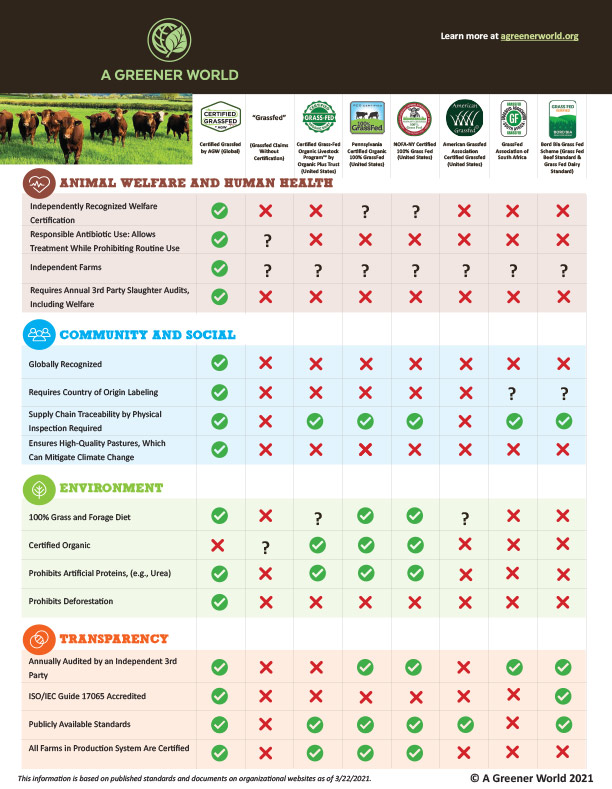One of the key attractions of our Certified Regenerative by AGW program is its practical…

Grassfed Comparison Chart
Cows, sheep, goats and bison (also known as ruminants) can do something amazing: they can thrive on grass—which humans cannot eat—while producing nutritious meat and milk which we can eat. Grass can grow on land that can’t grow human food, and well-managed pastures that ruminants graze can also store carbon in the soil, helping to mitigate greenhouse gas emissions.
Grassfed systems have an important role to play in sustainable food production and our future. However, grassfed labels can be confusing. If the milk and meat that you buy is labeled grassfed, how can you be sure that grassfed claim is true? Transparent, trusted third-party certifications are vital for protecting the interests of “true” grassfed farmers and conscientious consumers alike.
Here’s what you know when you see the Certified Grassfed by A Greener World label:
- Animals are fed a 100% grass and forage diet and raised outdoors on pasture or range
- Farms meet the highest welfare and environmental standards
- High-welfare handling, transport and slaughter
- Requires Certified Animal Welfare Approved by AGW certification
- No added hormones or routine antibiotics
- Independent farms using sustainable practices
- Ongoing audits to ensure integrity and transparency
While it’s great to see the increased interest in certifying grassfed claims (after all, how else do you know they’re really true?), it’s important to know which labels mean what. With an array of grassfed labels to choose from, how does Certified Grassfed by A Greener World compare? Use this handy comparison chart to see how we stack up to other grassfed labels, and help you find products that meet your expectations.
Download the free Grassfed Comparison Chart here.



